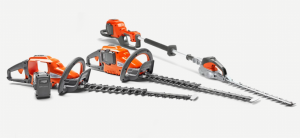Maintaining a pristine yard requires the right tools for the job. Two of the most essential—yet often confused—tools are lawn mowers and hedge trimmers. While both are designed to shape and beautify outdoor spaces, they serve distinct purposes. Let’s break down their differences, benefits, and ideal applications to help you choose wisely.

1. Key Differences
| Feature | Lawn Mower | Hedge Trimmer |
|---|---|---|
| Primary Purpose | Cut and level grass on lawns. | Trim and shape shrubs, hedges, and bushes. |
| Blade Design | Wide, rotating blades (reel or rotary). | Narrow, reciprocating blades (single or dual). |
| Cutting Action | Continuous, horizontal cutting. | Precision, vertical/horizontal trimming. |
| Power Sources | Gas, electric (corded/cordless), manual. | Cordless (battery), electric, gas. |
| Mobility | Wheeled for easy pushing/riding. | Handheld or pole-mounted for reach. |
| Ideal Cutting Height | Adjustable for uniform grass length. | Focused on shaping and detail work. |
2. Benefits of Each Tool
Lawn Mower Benefits
- Efficiency: Covers large areas quickly, ideal for lawns.
- Uniformity: Ensures even grass height for a polished look.
- Versatility: Some models mulch, bag, or discharge clippings.
- Advanced Features: Robotic and smart mowers automate the task (e.g., GPS-guided systems).
Hedge Trimmer Benefits
- Precision: Perfect for sculpting hedges, topiaries, and intricate designs.
- Portability: Lightweight and maneuverable for tight spaces.
- Reach: Pole models trim tall hedges without ladders.
- Safety: Sharper, controlled blades reduce accidental damage to plants.
3. When to Use a Lawn Mower
- Grass Maintenance: Weekly mowing to keep lawns healthy and prevent overgrowth.
- Large Yards: Gas or riding mowers suit expansive properties.
- Mulching: Returning clippings to the soil as natural fertilizer.
- Seasonal Cleanup: Tackling thick, overgrown grass in spring or fall.
Top Use Cases:
- Suburban lawns, parks, sports fields.
- Properties with flat or gently sloped terrain.
4. When to Use a Hedge Trimmer
-
- Hedge Sculpting: Creating geometric shapes or smooth edges on shrubs.
- Detail Work: Trimming around fences, windows, or garden ornaments.
- Thick Branches: Cutting back woody growth (select heavy-duty models).
- Height Access: Pole trimmers for tall hedges or hard-to-reach areas.
Top Use Cases:
- Formal gardens, privacy hedges, decorative topiaries.
- Landscapes with dense bushes or ornamental plants.
5. Can One Tool Replace the Other?
-
- While some multi-functional tools (e.g., string trimmers with hedge-cutting attachments) offer versatility, lawn mowers and hedge trimmers excel in their niches:
- A lawn mower can’t achieve the precision needed for hedge sculpting.
- A hedge trimmer won’t efficiently cut large grass areas.
Pro Tip: For comprehensive yard care, invest in both. Prioritize based on your landscape’s needs—lawn mowers for grass dominance, hedge trimmers for structured greenery.
- While some multi-functional tools (e.g., string trimmers with hedge-cutting attachments) offer versatility, lawn mowers and hedge trimmers excel in their niches:
6. Choosing the Right Tool for Your Needs
-
-
- For Grass-Focused Yards: Opt for a cordless lawn mower (e.g., EGO Power+ or Greenworks Pro) for eco-friendly efficiency.
- For Shrub-Heavy Landscapes: A cordless hedge trimmer (e.g., STIHL HSA 140 or Milwaukee M18 FUEL) offers power and agility.
- Budget-Friendly Combo: Brands like Ryobi or DEWALT offer battery-compatible tool systems to save costs.
-
Final Verdict
Understanding the lawn mower vs. hedge trimmer divide ensures your yard gets the care it deserves. Lawn mowers are your go-to for lush, even turf, while hedge trimmers unlock creativity in shaping living landscapes. By matching the tool to the task, you’ll save time, reduce effort, and achieve professional-grade results.
Post time: Apr-17-2025

